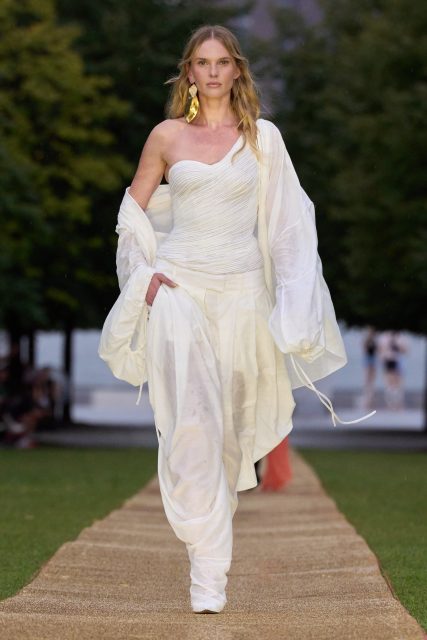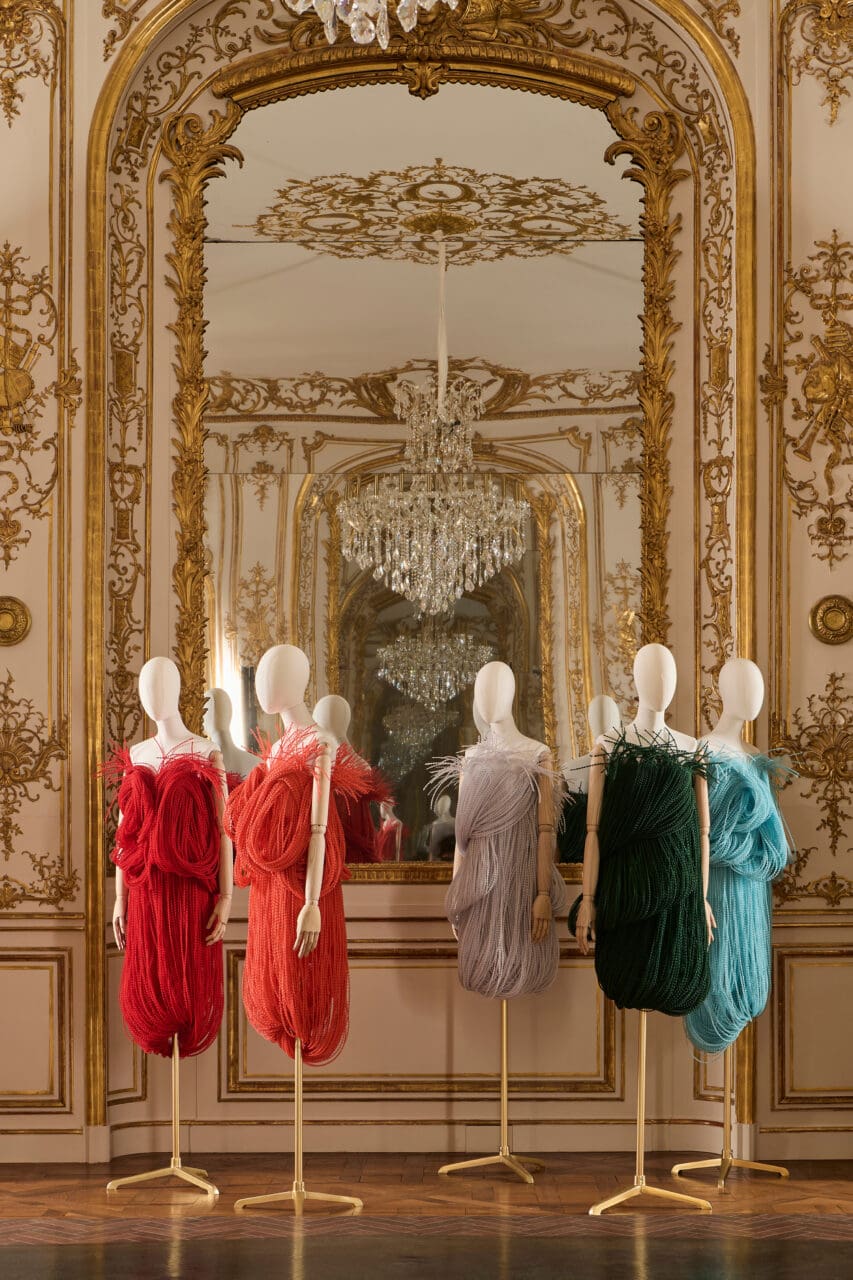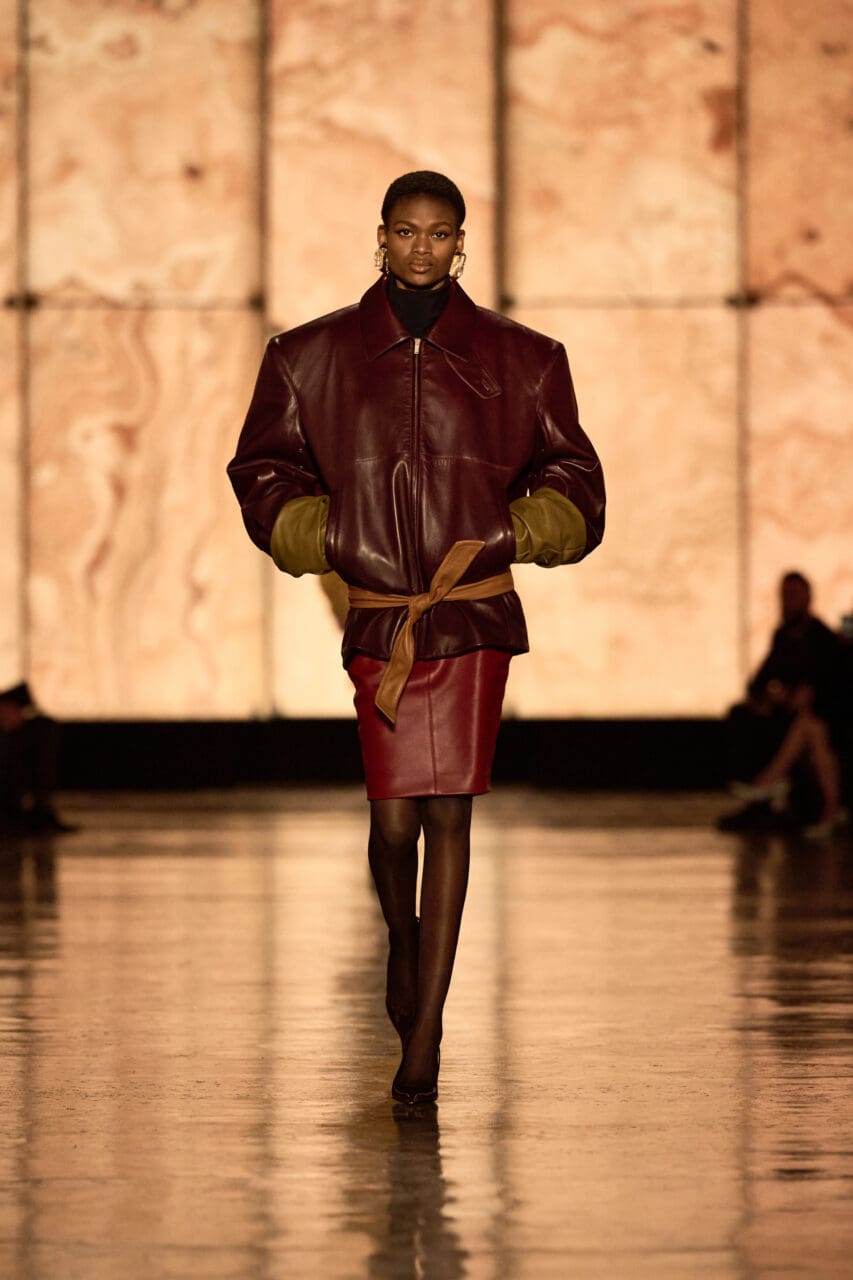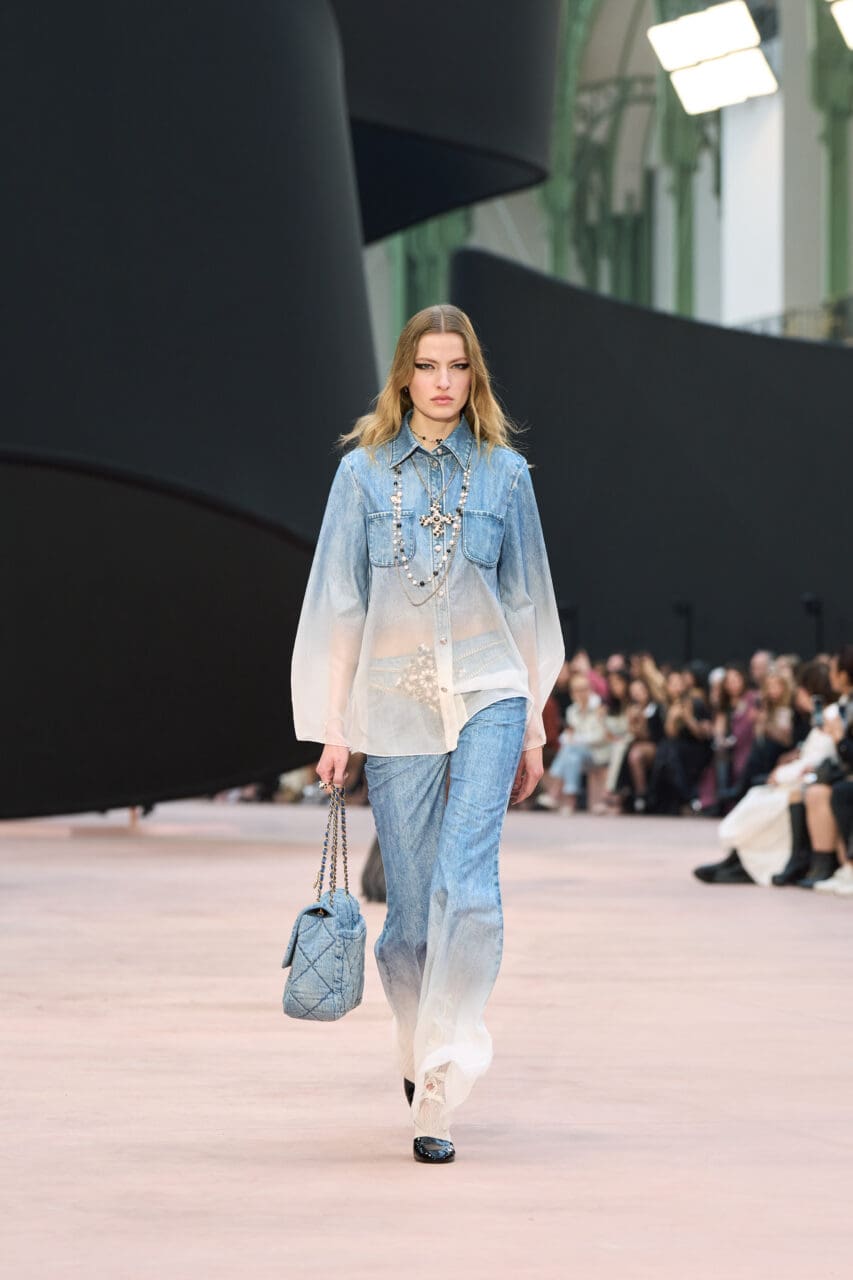It was two Septembers ago that Peter Do made his runway debut after showing off-calendar for the first few years of his eponymous brand. Now he’s filling the shoes of one of the most famous and influential designers of the last quarter century.
Helmut Lang walked away from his label in 2005, at the tippy top of his career, and in the years since his signature way of making the subversive elegant, elevating T-shirts, jeans, and army parkas to the level of high fashion and splicing bondage references into his lean suiting, has come to stand for everything that was cool in that era. Lang is a designer’s designer, with everyone from Raf Simons to Phoebe Philo quoting from work that, even as the decades turn, still looks resolutely modern, never retro. Do himself has namechecked him as one of his heroes. He might’ve osmosed that from Philo during his Céline days, but it was actually Tumblr that turned him onto Lang as a teenager in suburban Philadelphia.
In the years since Fast Retailing acquired the Helmut Lang brand it’s cycled through many iterations, including a one-off collection designed by Hood by Air’s Shayne Oliver for spring 2018. The back-and-forth did nothing to lower Lang’s own stature—he makes art now in Long Island—but the recent collections themselves had lost a point of view. Do’s appointment seems poised to change that. “The thing that I react really strongly to is work that almost looks like it’s always been there. I felt like good design is a design that feels like it’s always been there,” he said on Vogue’s The Run-Through podcast.
Do applied his super-fan’s eye for detail to the company’s history. The yellow taxi cab print that appeared in many fabrications was a callback to Lang’s then-agenda setting move of advertising on the top of taxi cabs, a format once considered too pedestrian for high fashion by his designer peers. And it also gave Do’s collaborator, the author Ocean Vuong, a theme for the poem that was printed on the concrete floor of the venue, calling back to the Jenny Holzer installation that was the centerpiece in the original Helmut Lang store at 80 Greene Street. His words also appeared on the backs of button-downs worn reversed so you could read them as the models walked by: “Your car was my first room / Our clothes on the floor like stepped-on flowers.”
Do also has a handle on Lang’s tailoring: the flat-front natural waist trousers, the androgynous, almost but not quite plain jackets, the crombie coats, all in fabrications that felt good in the hands at a showroom preview. The seat belt straps that criss cross the torso and pass through belt loops are straight out of the archive, a reference to the underground world of bondage clubs, but remove them and the suits will pass in the straight world.
The potential for the new Helmut Lang lies in those high fashion suits at reasonable, less-than-high fashion prices. “We want to open up the dialogue to a wider group of people… and for the clothes to have longevity without being super expensive,” Do said, adding that he wouldn’t have taken the job if the prices here were the same as at his own label. That instinct to create immediate and obvious differentiation between the two brands he’s now responsible for is proof that Do is thinking big picture. He may be starry-eyed about his designer hero, but he’s got his head on his shoulders about the business.
Editor
Nicole PhelpsCredit
Lead Image: Courtesy of Helmut Lang





